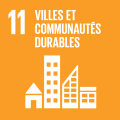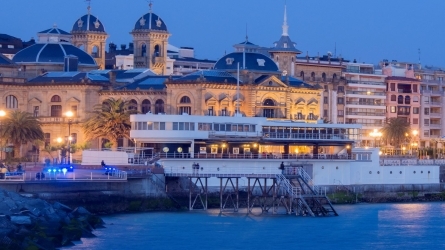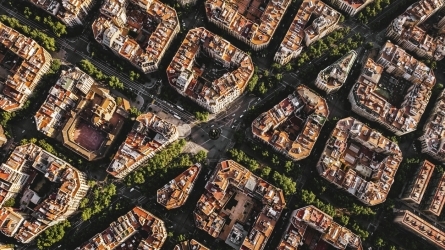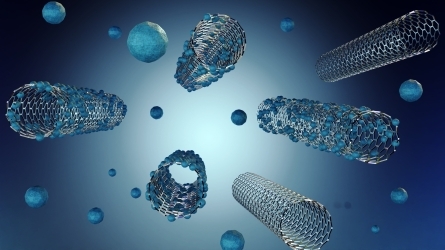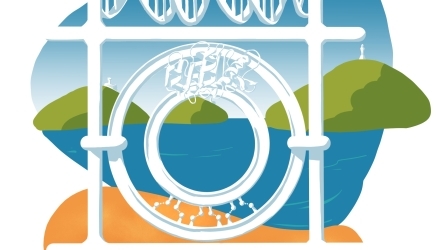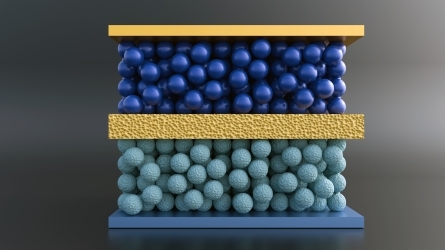Aizpurua, Labayen y la arquitectura de su tiempo
Description
El Curso de Verano analiza la obra y la época de José Manuel Aizpurua (San Sebastián, 1902-1936) y Joaquín Labayen (Tolosa, 1900-1995). Los dos arquitectos fueron fundamentales en el desarrollo de la arquitectura racionalista o Nueva Arquitectura gracias a obras como su ‘studio’ de arquitectura (1927-1928), el Real Club Náutico de San Sebastián (1928-1929), que se podrá visitar, o diferentes diseños de mobiliario. Aizpurua y Labayen también organizaron la exposición ‘Arquitectura y pintura modernas’ (San Sebastián, 1930), de la que surgió el GATEPAC (Grupo de Arquitectos y Técnicos Españoles para el Progreso de la Arquitectura Contemporánea), que publicó la conocida revista AC (1931-1937) y contó con un subgrupo vasco denominado Grupo Norte o GATVPAC.
El primer día del curso, por la tarde, se ofrece una visita guiada y opcional a las instalaciones del Náutico. Cada visita tendrá una duración de media hora.
Objectives
Analizar y dar a conocer la obra de Aizpurua y Labayen.
Subrayar la relevancia de la obra de Aizpurua y Labayen en su época.
Activity directed to
- All public
- University student
- Students not from university
- Teachers
- Professionals
In collaboration with
Program
10-07-2023
Registro
Presentation by the Director of the activity
Aurkezpena/ Presentación
- Francisco Javier Muñoz Fernández | UPV/EHU - Profesor
“La irrupción del País Vasco 1890-1936“
- Juan Pablo Fusi Aizpúrua | Universidad Complutense de Madrid - Catedrático
“Propuestas diversas en el arte de los años 30: entre la vanguardia y la tradición“
- Ismael Manterola Ispizua | UPV/EHU - Profesor
“GATEPAC: arquitectura en transición“
- Oscar Miguel Ares Álvarez | Universidad de Valladolid - Profesor
Break
“Labayen & Aizpurua Studio: arquitectura de la vanguardia, 1927-1936“
- José Ángel Medina Murua | Universidad de Navarra - Profesor
“Experimentación en la obra gráfica y construida de Aizpurua y Labayen. El Real Club Náutico de San Sebastián, edificio polícromo“
- José Javier Pérez Martínez | UPV/EHU - Profesor
- María Senderos Laka | UPV/EHU - Profesora
- Iñigo Leon Cascante | UPV/EHU - Profesor
“Opcional: Visita guiada al Real Club Náutico de San Sebastián ( grupos reducidos de media hora de duración)“
- María Jesús Pacho Fernández | UPV/EHU - Profesora
- Francisco Javier Muñoz Fernández | UPV/EHU - Profesor
11-07-2023
“Cuaderno de viajes de Aizpurua y Labayen“
- Francisco Javier Muñoz Fernández | UPV/EHU - Profesor
“José Manuel Aizpúrua. La mirada fotográfica de un arquitecto“
- Peio Aguirre Azkarate | Crítico de arte, escritor y comisario independiente
“El mobiliario de Aizpurua y Labayen, dos arquitectos prácticos“
- María Villanueva Fernández | Universidad de Navarra - Profesora
Break
“Aizpurua & Lagarde, "Casa vivienda en Fuenterrabía", génesis de un proyecto“
- José Antonio Barea Arrazubi | UPV/EHU - Profesor
“El Grupo Norte del GATEPAC. Un grupo a medio conformar “
- Lauren Etxepare Igiñiz | UPV/EHU - Profesor
Directors

Francisco Javier Muñoz Fernández
UPV/EHU
Speakers

Peio Aguirre Azkarate
Peio Aguirre is an art critic, writer and independent curator based in Donostia-San Sebastian, Basque Country/Spain. As a writer, he is interested in subjects such as modernism, Marxism, form and formalism and also science fiction. In his critical approach, he finds and explicit interest in the crossing boundaries between critical theory, art, architecture and design He is author of the books La línea de producción de la crítica (consonni, 2014), Estilo. Estética, vida y consumo (Turner, 2022). Current teacher at Elías Querejeta Film School, San Sebastian. Curator for the Spanish Pavilion in the 58th Venice Biennale, 2019.

Oscar Miguel Ares Álvarez

José Antonio Barea Arrazubi
upv/ehu
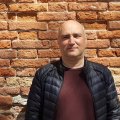
Lauren Etxepare Igiñiz
EHU/UPV
Lauren Etxepare es arquitecto por la Escuela Técnica Superior de Arquitectura de San Sebastián (2000), y doctorado por la UPV/EHU (2008), con la tesis Deterioro de un Sistema Constructivo: el Ensanche de Cortázar. Es profesor titular del Departamento de Arquitectura. Imparte docencia en el Grado en Fundamentos de Arquitectura y en el Máster Universitario en Rehabilitación de las Construcciones Existentes. Ha sido profesor Erasmus en la École Nationale Supérieure d’architecture Paris-Belleville (2017), la École nationale supérieure d’architecture de Montpellier (2018) y la Facoltà di Architettura (La Sapienza, Roma, 2021). Dirigió el Departamento de Arquitectura de la Universidad del País Vasco entre 2000 y 2015. Ha dirigido nueve tesis doctorales. Realizó una estancia de investigación de 4 meses en la Université de Pau et des pays de l'Adour (2019), Francia. Ha participado, entre 2004 y 2020 en 11 proyectos de investigación, dirigiendo 3 de ellos. Autor de 50 artículos y 20 comunicaciones a congresos. Ha participado como evaluador en la Agència de Gestió d’Ajuts Universitaris i de Recerca, de la Generalitat de Catalunya, entre los años 2012 y 2020.

Juan Pablo Fusi Aizpúrua
Universidad Complutense Madrid

Iñigo Leon Cascante
UPV/EHU
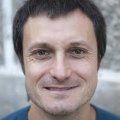
Ismael Manterola Ispizua
MHLI. UPV/EHU
(Zumaia, 1966). Arte Historian lizentziatu zen Valentziako Unibertsitatean eta doktoregoa EHU/UPVn gauzatu zuen Arte Historian. Egun EHU/UPVko Arte Ederren Fakultatean Artearen Historia irakasten dihardu. Egunkarian, Berrian eta Garaegunkariko Mugalari gehigarrian arte kritika idatzi du. Gure Artea 2006 (2006) eta Bilbea eta Hari askeak: euskal artearen bi bildumen arteko elkarrizketa (2014) izeneko erakusketak antolatu ditu. Bere agitalpenen artean daude, besteak beste, 2012an UPV/EHUko Argitalpen Zerbitzuaren eskutik kaleratutako Raemaekersen Marrazkiak: Britainiar propaganda Espainian eta Euskal Herrian Lehen Mundu Gerranliburua eta Autonomía e ideología (2016) liburuko “Compromiso o especifiicidad del medio. Arte en el País Vasco en las últimas décadas del siglo XX” atala.
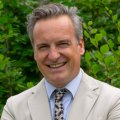
José Ángel Medina Murua
José Ángel Medina Murua es arquitecto desde el año 2000 con Premio Schindler Fin de Carrera y doctor por la Universidad (2005). Desde entonces, ha permanecido vinculado al departamento de Proyectos de esta Escuela. En 2012 fue nombrado director de la Escuela de Arquitectura de la Universidad de Navarra, cargo que ejerció hasta 2015. Actualmente es Subdirector de Postgrado de este centro y Director del Instituto de Arquitectura de Euskadi (EAI-IAE). José Ángel Medina ha impartido y participado en cursos y conferencias en el Tecnológico de Monterrey (México), La Pontificia Universidad Católica de Ecuador o en GSAPP de Columbia University, en Nueva York; así como en la Stiftung Bibliothek Werner Oechslin, en Einsiedeln (Suiza) y en el ETH de Zúrich. Asimismo, compagina la docencia con una extensa labor profesional como arquitecto.

María Jesús Pacho Fernández
UPV/EHU

José Javier Pérez Martínez
UPV/EHU, PDI
José Javier Pérez Martínez is a PhD in Architecture and Associate Professor of the Department of Architecture of the University of the Basque Country UPV/EHU. He is the author of various scientific publications in indexed journals, and has made various presentations at national and international conferences. He is developing different investigations related to new forms of graphic representation in the territorial, urban and architectural fields through 3D digital models generated by laser scanner and SfM photogrammetry, as well as on the implementation of these models in BIM environments. In a broader context, they develop their research on the architectural drawing of the 20th century, carrying out a critical reflection of the conceptual changes introduced by the artistic avant-gardes and the transformations brought about by new technologies, trying to define the teacher training of the 21st century in the area of Architectural Graphic Expression.
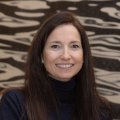
María Villanueva Fernández
Doctora en Arquitectura por la Universidad de Navarra, Matrícula de Honor en el Proyecto Fin de Carrera y Premio Luis Moya Blanco. Profesora de la Universidad de Navarra, donde ha impartido docencia en la Escuela de Arquitectura, la Escuela de Ingeniería de TECNUN, el Máster Ejecutivo en Dirección de Empresas de Moda de ISEM Fashion Business School y la Facultad de Comunicación. Ha centrado su investigación en la historia y teoría del diseño del siglo XX, en concreto al trabajo de los arquitectos españoles en el ámbito del diseño y los límites de esta disciplina con el arte y la arquitectura. Ha difundido su investigación en congresos internacionales y ha publicado capítulos de libros y artículos en revistas indexadas como Interiors, VLC, EGA, PPA, RA, Rita_redfundamentos, Res Mobilis, entre otras. Es autora del libro Una Caracterización del mueble moderno (2020, EUNSA). Ha realizado estancias de investigación en el Getty Research Institute (Los Ángeles), en la GSAPP Columbia University (Nueva York) como visiting scholar y en ENSAPBX, Burdeos. Es miembro del grupo de investigación Separata.

María Senderos Laka
UPV, Profesor laboral interino
María Senderos Laka is a PhD in Architecture and Professor Assistant Doctor of the Department of Architecture of the University of the Basque Country UPV/EHU. She is the author of scientific publications in indexed journals, and has made various presentations at national and international conferences. She is developing different investigations related to new forms of graphic representation in the territorial, urban and architectural fields through 3D digital models generated by laser scanner and SfM photogrammetry, as well as on the implementation of these models in BIM environments. In a broader context, she develops her research on the architectural drawing of the 20th century, carrying out a critical reflection of the conceptual changes introduced by the artistic avant-gardes and the transformations brought about by new technologies, trying to define the teacher training of the 21st century in the area of Architectural Graphic Expression. Likewise, she is developing new projects related to the chromatic and material values of the facades, for the rehabilitation and new meaning of the urban environment.
Registration fees
| Face-to-face | Until 31-05-2023 | Until 10-07-2023 |
|---|---|---|
| 25,00 EUR | 59,00 EUR | |
| - | 84,00 EUR | |
| - | 71,00 EUR | |
| - | 59,00 EUR | |
| - | 71,00 EUR | |
| - | 71,00 EUR |
| Live online | Until 31-05-2023 | Until 10-07-2023 |
|---|---|---|
| 25,00 EUR | 59,00 EUR | |
| - | 84,00 EUR | |
| - | 71,00 EUR | |
| - | 59,00 EUR | |
| - | 71,00 EUR | |
| - | 71,00 EUR |
Venue
Miramar Palace
Pº de Miraconcha nº 48. Donostia / San Sebastián
Gipuzkoa
Miramar Palace
Pº de Miraconcha nº 48. Donostia / San Sebastián
Gipuzkoa
Sustainable development goals
Agenda 2030 is the new international development agenda approved in September 2015 by the United Nations. This agenda aims to be an instrument to favour sustainable human development all over the planet, and its main pillars are the eradication of poverty, a reduction in equality and vulnerability and fostering sustainability. It is a unique opportunity to transform the world up to 2030 and guarantee human rights for all.
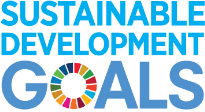
4 - Quality education
Guarantee quality education that is inclusive and equitable and foster opportunities for lifelong learning for everyone. Key issues: free-of-charge, equitable and quality education, access to higher education and training on an equal basis, education for sustainable development, suitable education centres for persons with disabilities, and safe, non-violent and efficient learning environments.
More information
5 - Gender equality
Achieve gender equality and empower all women and young girls. Key issues: the end of all forms of discrimination and violence, recognition of unpaid care and domestic work, shared responsibility, equal opportunities, full and effective participation in reproductive rights, equal rights vis-à-vis economic resources, access to land and other assets and ownership.
More information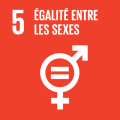
11 - Sustainable cities and communities
Make cities and other human settlements inclusive, safe, resilient and sustainable. Key issues: access to suitable housing and basic services that are secure and affordable, suitable and sustainable transport systems, inclusive urban planning, participative planning and management, protection of cultural and natural heritage, air-quality, green zones, and connections between urban, peri-urban and rural areas.
More information